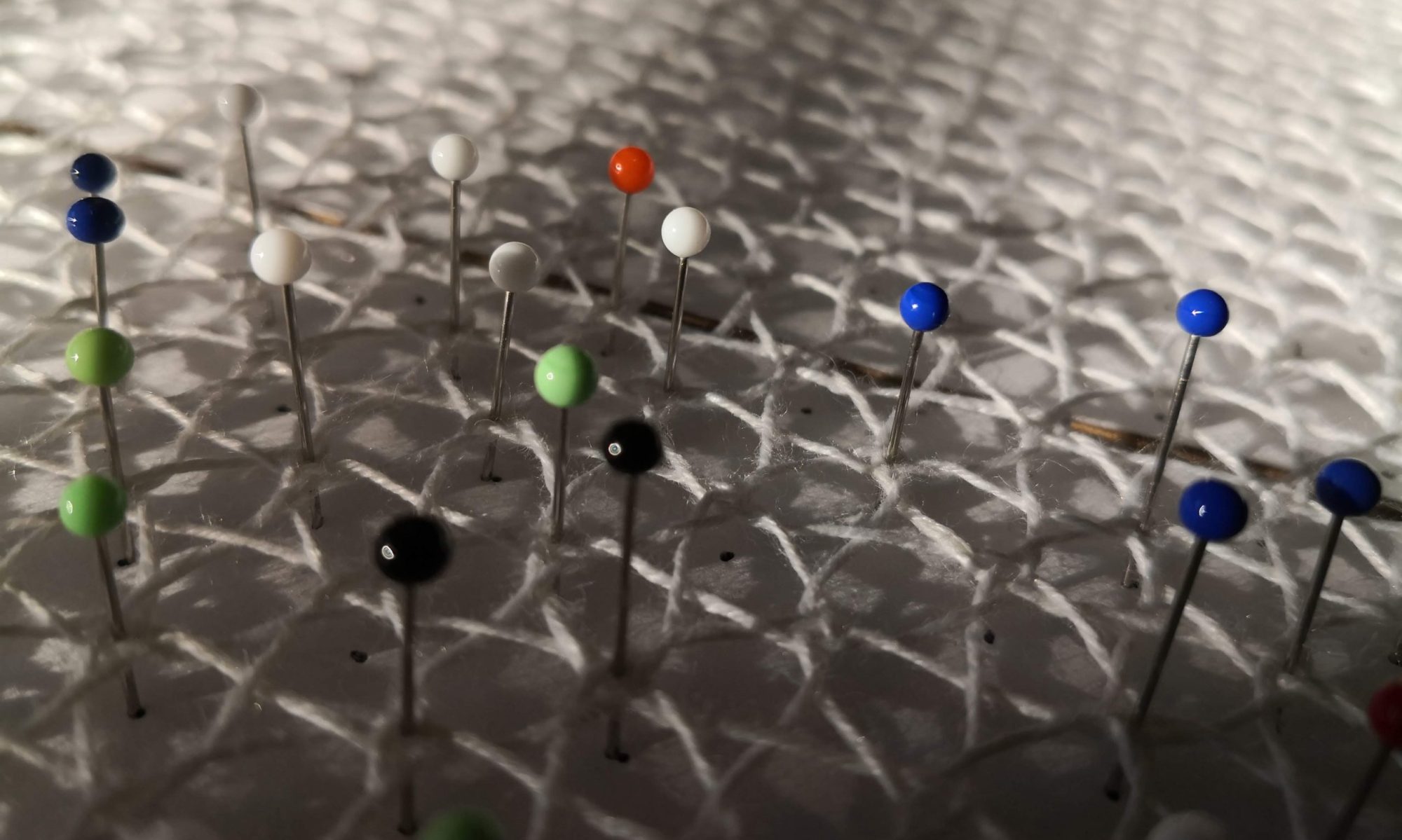In Rauma, lace is an everyday occurrence for many people throughout the year, but in public it is mainly seen once a year, during the Rauma Lace Week, of course. For years, I have been arguing that lace should become more of a year-round event, a phenomena. Often the best way to bring about change is to be the change you want to see. For this reason, I rolled up my sleeves and decided to put on a mini exhibition in the middle of winter to counterbalance the summer and Lace Week.
Initially, however, the “excuse” for the exhibition was my 40th birthday in the end of last December. I wanted to celebrate this milestone in some way and I thought an exhibition would be a good way to do it. Soon, however, while planning the content of the exhibition, I realised that the exhibition was in fact the answer to what I had been loudly proclaiming for a long time: to get more lace into everyday life and out in the open. The theme of the exhibition was lace in Rauma’s public art.
The story of lace in public art in Rauma starts practically from 1976 with the publication of Kauko Räike’s Lacemaker statue. The new main library in 2003 brought a fresh transition to the new millennium with its lace-embellished glass elements. The works created since then, both temporary and permanent, have largely been my handiwork.
Although the content of the mini exhibition focuses on my own work – in the absence of works by others – I am not the subject of the exhibition. I want to positively provoke other people to bring lace out to the open. At the same time, however, the viewer can see that through my own activities I have been working for many years for the cause I have been preaching.
The miniature exhibition is mainly based on posters. But there are a few objects on display, including a brand new piece made for the new Kari Campus. The theme for the campus art project was Väylä (‘fairway/lane/passage/way’), from which I drew my own interpretation. The title of my artpiece contains the coordinates and the radius of the circle that make up a sea area, or rather a seabed and a nautical chart within the artpiece. The lace topographically follows the shapes of the seabed in question. The work will be placed in the staff offices in the Kari Campus, which makes it questionable whether it can be considered public art. I wanted to display the work in this context precisely because, once the campus is completed, few people will have the opportunity to see it. After all it is made with public money from the tax payers, so I think it is fair to give the public a chance to see it.
The miniature exhibition is on display in the exhibition window of Silmäoptikot Palmu, Kuninkaankatu 10, Rauma, Finland. The exhibition will be open until at least the end of February.
Within the following weeks I will little by little post content of the exhibition so that the audience outside of Rauma has a chance to see what is lace in public art in the town of Rauma.
